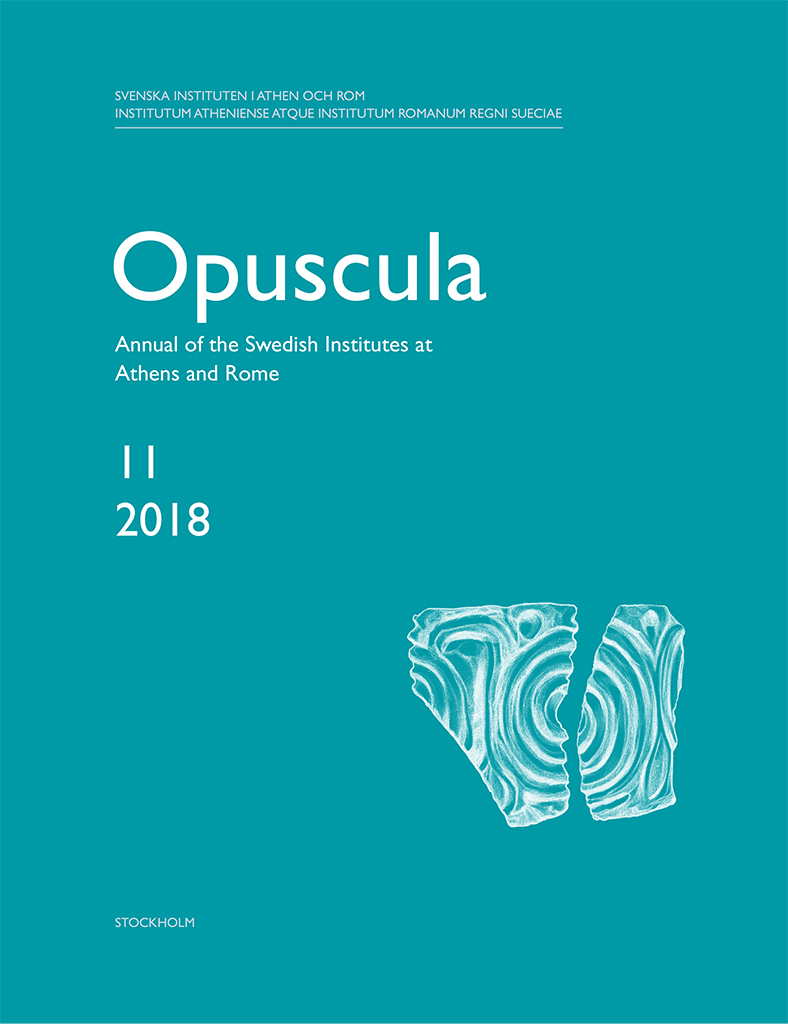Opuscula is published by the Swedish Institutes at Athens and Rome, with the aid of a grant from the Swedish Research Council. Distributed by Eddy.se AB. View journal at ERIH PLUS. All content available with open access. Preliminary report of the Malthi Archaeological Project, 2015–2016 By Rebecca Worsham (Smith College), Michael Lindblom (Uppsala University) & Claire Zikidi (Independent scholar, Greece). Abstract This article offers preliminary results and tentative interpretations of new work at the previously excavated settlement of Malthi in Messenia, south-west Pelopponese. The work included an intensive survey of the site architecture, as well as test excavations of spaces within and outside of the fortification wall. We propose updated observations on the chronology and phasing of the site based on pottery dates from the new excavation and comment on the preserved architecture as it compares to other settlements of the period. The settlement appears to have been first inhabited in the second half of the Middle Helladic period. Little, if any, architecture from this phase can be securely identified today. At the beginning of the Late Helladic period a fortification was erected, and the entire layout of the site was transformed. The construction likely took place as a single…
Opuscula is published by the Swedish Institutes at Athens and Rome, with the aid of a grant from the Swedish Research Council. Distributed by Eddy.se AB. View journal at ERIH PLUS. All content available with open access. Clay paste characterization and provenance determination of Middle and Late Helladic vessels from Midea By Katie Demakopoulou, Nicoletta Divari-Valakou, Joseph Maran, Hans Mommsen, Susanne Prillwitz & Gisela Walberg Abstract Results of the Neutron Activation Analysis (NAA) of 61 pottery samples of Middle and Late Helladic date from recent excavations in Midea are presented. Chronologically, the sampled pieces fall into two groups, the first of Middle Helladic and Late Helladic I/II, the second of LH III date, with most samples dating to LH IIIB or IIIC. The analyses suggest an Argive/North-eastern Peloponnesian provenance for the majority of the sampled pottery, since 26 of the samples are assigned to the NAA group Mycenae-Berbati (MYBE) and 15 to the NAA group Tiryns (TIR), including their subgroups. In addition to the two main groups the analyses include three other categories: “non-Argive”, unlocated, and singles. The differentiation into a small number of distinct chemical patterns is much more evident in the second chronological group of sampled pottery than…


